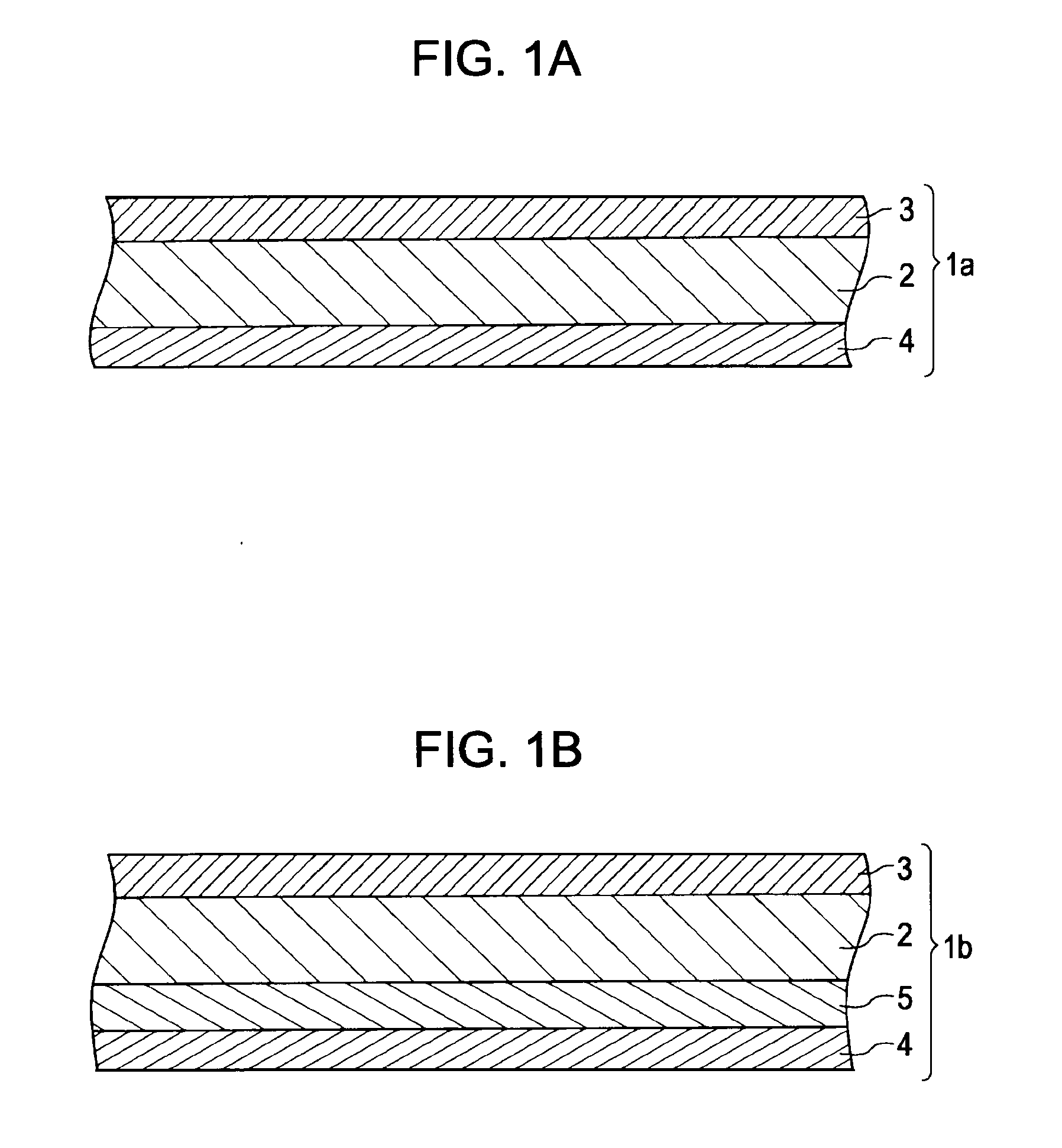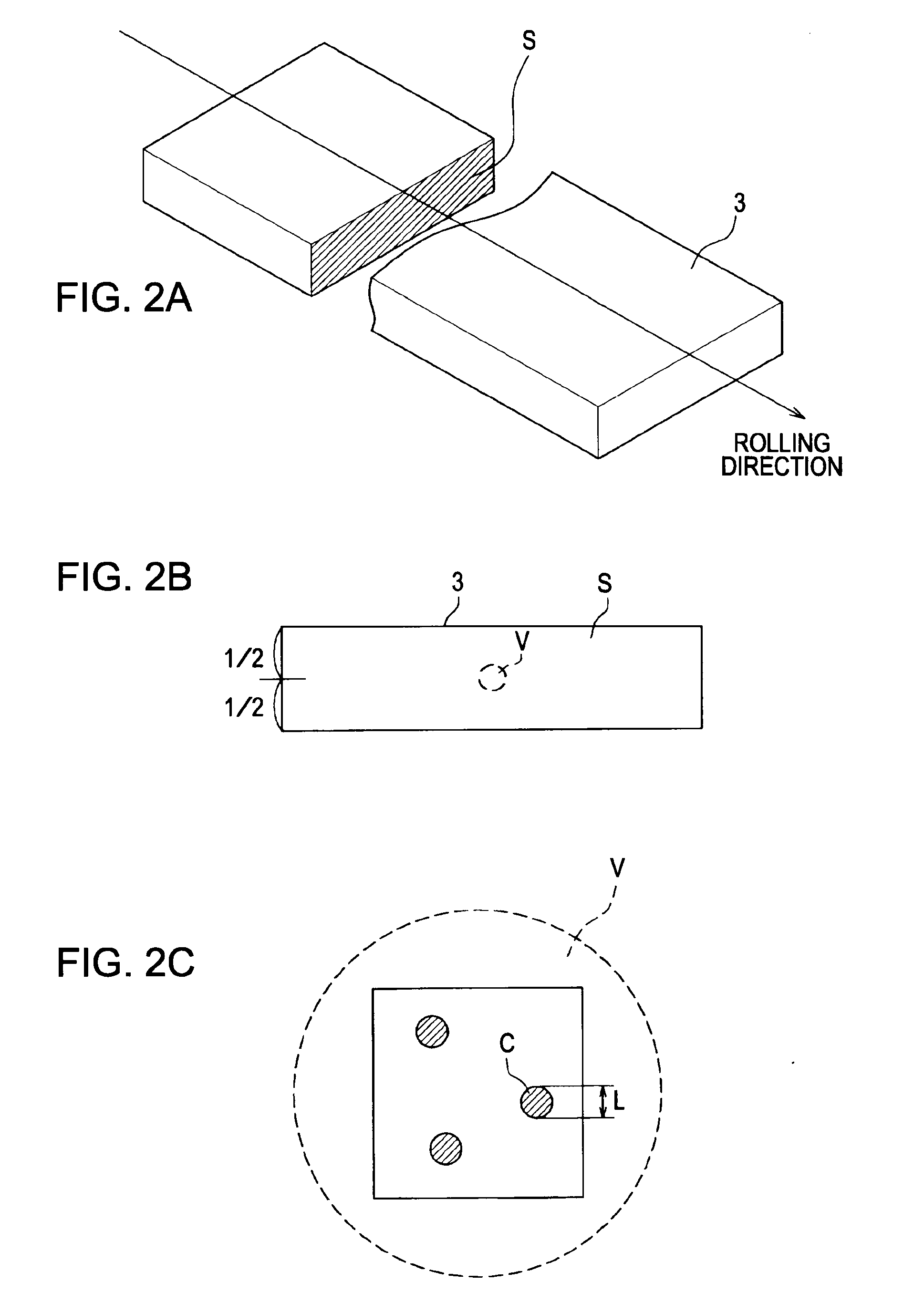Aluminum alloy clad sheet for heat exchanger
a technology of aluminum alloy and clad sheet, which is applied in the direction of manufacturing tools, soldering devices, light and heating equipment, etc., can solve the problems of difficult to achieve sufficient corrosion resistance and existing aluminum alloy clad sheets for heat exchangers, and achieve the effect of improving the strength and the corrosion resistance of the clad sheet without causing deterioration in brazeability
- Summary
- Abstract
- Description
- Claims
- Application Information
AI Technical Summary
Benefits of technology
Problems solved by technology
Method used
Image
Examples
first embodiment
[0032]In an aluminum alloy clad sheet for heat exchangers according to a first embodiment of the present invention, a core layer 2 contains predetermined amounts of Si, Mn, Cu, Ti, and optional Mg, and the remainder of Al and incidental impurities, and a sacrificial layer 3 contains predetermined amounts of Zn and Cr, and the remainder of Al and incidental impurities.
Core Layer
[0033]The core layer 2 contains Si: 0.15% to 1.6% by mass, Mn: 0.3% to 2.0% by mass, Cu: 0.1% to 1.0% by mass, Ti: 0.02% to 0.30% by mass, and the remainder of Al and incidental impurities. The core layer 2 may further contain Mg: 0.05% to 0.7% by mass to improve the strength of the core layer 2.
Si: 0.15% to 1.6% by mass
[0034]Si is effective in improving the strength of the core layer 2. In particular, when the core layer 2 contains Mg, a Si—Mg precipitate can improve the strength of the core layer 2. However, less than 0.15% by mass Si is insufficient to improve the strength of the core layer 2. On the other ...
second embodiment
[0050]In an aluminum alloy clad sheet for heat exchangers according to a second embodiment of the present invention, a core layer 2 contains predetermined amounts of Si, Mn, Cu, Ti, and optional Mg, and the remainder of Al and incidental impurities, and a sacrificial layer 3 contains predetermined amounts of Zn, Cr, Si, and Mn, and the remainder of Al and incidental impurities. The dispersion of an intermetallic compound precipitated in the sacrificial layer 3 is controlled in a predetermined manner.
Core Layer
[0051]The core layer 2 contains Si: 0.15% to 1.6% by mass, Mn: 0.3% to 2.0% by mass, Cu: 0.1% to 1.0% by mass, Ti: 0.02% to 0.30% by mass, and the remainder of Al and incidental impurities. The core layer 2 may further contain Mg: 0.05% to 0.7% by mass to improve the strength of the core layer 2. The reason that the amounts of alloy components in the core layer 2 have been specified and the description of the remainder are the same as in the first embodiment and will not be fur...
examples
[0073]An aluminum alloy clad sheet for heat exchangers according to the present invention will be further described by comparing Examples that comply with the requirements set forth herein with Comparative Examples that do not comply with the requirements.
Sample Fabrication
[0074]Aluminum alloys for a core layer a to p having chemical compositions shown in Table 1 were melted and cast into an ingot at a casing temperature of 700° C. to produce an ingot. After homogenization heat treatment under conditions of 530° C. for 75 minutes and cooling to 500° C. at 0.5° C. / min, the ingot was hot-rolled to produce a sheet for a core layer.
[0075]Aluminum alloys for a sacrificial layer A to J having chemical compositions shown in Table 2 were melted and cast into an ingot at a casing temperature in the range of 700° C. to 760° C. After homogenization heat treatment at a temperature in the range of 450° C. to 550° C. for 6 hours or less and at a cooling rate of 0.5° C. / min, the ingot was hot-roll...
PUM
| Property | Measurement | Unit |
|---|---|---|
| Temperature | aaaaa | aaaaa |
| Length | aaaaa | aaaaa |
| Fraction | aaaaa | aaaaa |
Abstract
Description
Claims
Application Information
 Login to View More
Login to View More - R&D
- Intellectual Property
- Life Sciences
- Materials
- Tech Scout
- Unparalleled Data Quality
- Higher Quality Content
- 60% Fewer Hallucinations
Browse by: Latest US Patents, China's latest patents, Technical Efficacy Thesaurus, Application Domain, Technology Topic, Popular Technical Reports.
© 2025 PatSnap. All rights reserved.Legal|Privacy policy|Modern Slavery Act Transparency Statement|Sitemap|About US| Contact US: help@patsnap.com



